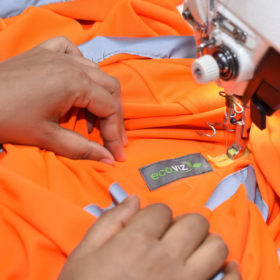No products in the basket.
PPE, Safety Gloves
Changes to EN 388: Protective gloves against mechanical risks
A new version of the glove standard BS EN388:2016 has been published, superseding EN388:2003. This standard specifies the testing and marking required for protective gloves against mechanical hazards such as abrasion, blade cut, tear, puncture and, if applicable, impact. The changes will only apply to new product certification and will not apply retrospectively. Gloves will continue to be sold under both versions of the standard until 2023, when old certification will need to be renewed under the new PPE Regulation.
Why the Change?
With 4.5 million working days lost in 2015/16 due to workplace injury (according to HSE statistics), it is vital for employers to provide workers with PPE that gives them the optimum level of protection for the job they are doing, and PPE manufacturers & suppliers need to be able to offer products which fulfil this.
Those revising the standard felt that the test methods involved, particularly with regarding the blade cut resistance, were not fully indicative of the glove’s performance. The revised standard allows for further testing under relevant conditions that will give a more accurate representation of the actual degree of protection, improving the information that can be provided to the user.
What’s changing?
Cut Resistance
Previously cut resistance level was tested under the standard using the Coupe cut test, which uses a counter rotating blade under a fixed load moving back and forth across the surface of the glove and was categorised based on how many passes the blade makes without cutting through the fabric, whether or not the blade is blunted during the process.
However under the new revision, the number of passes during the Coupe test is limited to 60 whether or not it has cut through the fabric, and an additional ISO test (EN ISO 13997:1997) will be employed to provide a further cut performance indicator.
The ISO test uses a straight edged blade making a single pass with variable force, and cut levels are defined A to F, increasing in levels of protection determined by the force applied.
When certifying products manufacturers can choose to use either or both tests, but the ISO cut test is mandatory when blunting occurs during the Coupe method, and this would be the result used to assess the glove’s performance. This means that gloves utilising materials prone to blunting the blade, when recertified, will potentially record a lower cut resistance index and performance.
Abrasion Resistance
The specification of the abrasive paper used within clause 6.1 (resistance to abrasion) has been updated, along with a number of minor changes to test materials. This revision means that it is possible some abrasion scores may change when a product is re-certified under the new test conditions.
Impact protection
The old EN388:2003 standard did not include a test to assess gloves on protection against impacts, however in the latest version manufacturers now have the option to include this test within the EN388:2016 standard. These gloves will be tested to section 6.6 of EN 13594:2015 and have a letter P after their other markings to show they conform to Level 1, Table 7 (Protective gloves for motorcycle riders).
Marking changes
Please see the table below for examples of the new glove marking system, including the two new elements relating to the ISO cut method and the optional impact protection.




